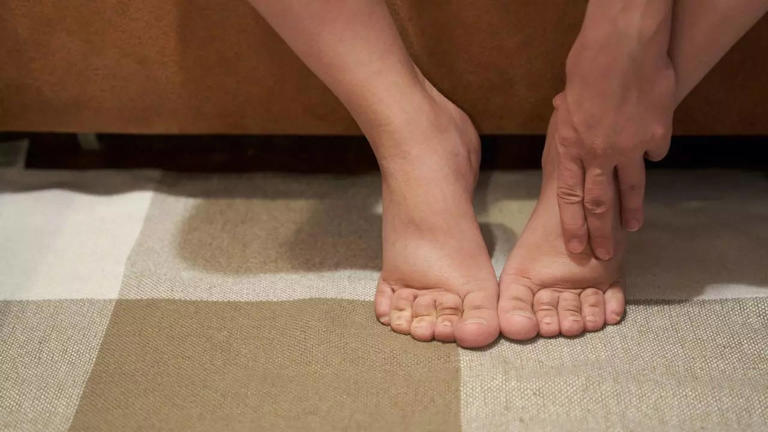Swelling To Itching: 6 Signs of Kidney Disease Detected on Feet

Your kidneys are one of the most important organs of the body. They help in removing waste products and toxins such as urea, creatinine, and excess ions, from the blood in the form of urine. However, kidney disease affects the functioning of the kidneys. This eventually affects different functions of the body. If kidney disease is left untreated, it can lead to serious complications such as cardiovascular disease, kidney failure requiring dialysis or transplantation, and even death.
Therefore, it is important to spot the early signs of kidney disease so that you can seek the required treatment that prevents the condition from reaching advanced stages which might lead to kidney failure. Here, take a look at some of the signs of kidney disease that might appear on your feet.
Oedema (Swelling)
One of the important signs of kidney disease is oedema, which commonly is seen as swelling in the feet and ankles. Poor kidney function may affect its ability to remove excess fluid and sodium from the body, leading to fluid retention. This accumulation of fluid causes swelling, often noticeable as puffiness or tightness in the feet.Skin Changes
Chronic kidney disease can result in various skin changes, some of which may be seen on the feet. The skin may become darker, taking a bronze-like or yellowish shade, due to a buildup of waste products in the blood. Also, the texture of the skin may change, becoming dry, itchy or flaky, which can be particularly prominent in the feet.Pruritus (Itching)
Persistent itching, also known as pruritus, is a symptom associated with kidney damage. Itching is often generalized but may be particularly seen in the lower extremities, including the feet. It is believed that the itching happens due to the buildup of toxins in the bloodstream.Peripheral Neuropathy
Kidney disease can lead to nerve damage, resulting in peripheral neuropathy. This condition causes symptoms such as tingling, numbness or burning sensations in the feet and legs. Peripheral neuropathy can impact mobility and quality of life for people with kidney disease and it worsens as the condition reaches advanced stages.Foot Pain
In advanced stages of kidney disease, a rare but serious condition called calciphylaxis can happen. This condition is characterised by painful, non-healing wounds on the skin which typically affect the feet and lower legs. Calciphylaxis is caused by calcium and phosphorus imbalances in the body, leading to the formation of calcifications in small blood vessels, ultimately resulting in tissue damage and necrosis.Nail Changes
Changes in the appearance and texture of the nails may also be indicative of kidney disease. Nails may become discoloured, thickened or brittle, and these changes may be particularly noticeable in the toenails.
Spotting these signs and symptoms on the feet can help people seek medical evaluation and appropriate treatment for underlying kidney disease. Early detection and treatment are important for slowing the progression of kidney disease and reducing the risk of complications.
This is only for your information, kindly take the advice of your doctor for medicines, exercises and so on.
https://gscrochetdesigns.blogspot.com. one can see my crochet creations
https://gseasyrecipes.blogspot.com. feel free to view for easy, simple and healthy recipes
https://kneereplacement-stickclub.blogspot.com. for info on knee replacement
https://cancersupportindia.blogspot.com for infor on cancer and health related topics
https://GSiyers
home remedies.blogspot.com is the latest addition to my blogs. I'm
going to add posts there, do give me your valuable feed back on my
blogs. Thanks a lot, take care, be healthy and be happy.
Labels: creatinine, foot pain, itching, nail changes, signs of kidney disease-peripheral neuropathy, skin changes, spotting on feet, swelling in feet &ankles, waste products & toxins- urea

0 Comments:
Post a Comment
<< Home